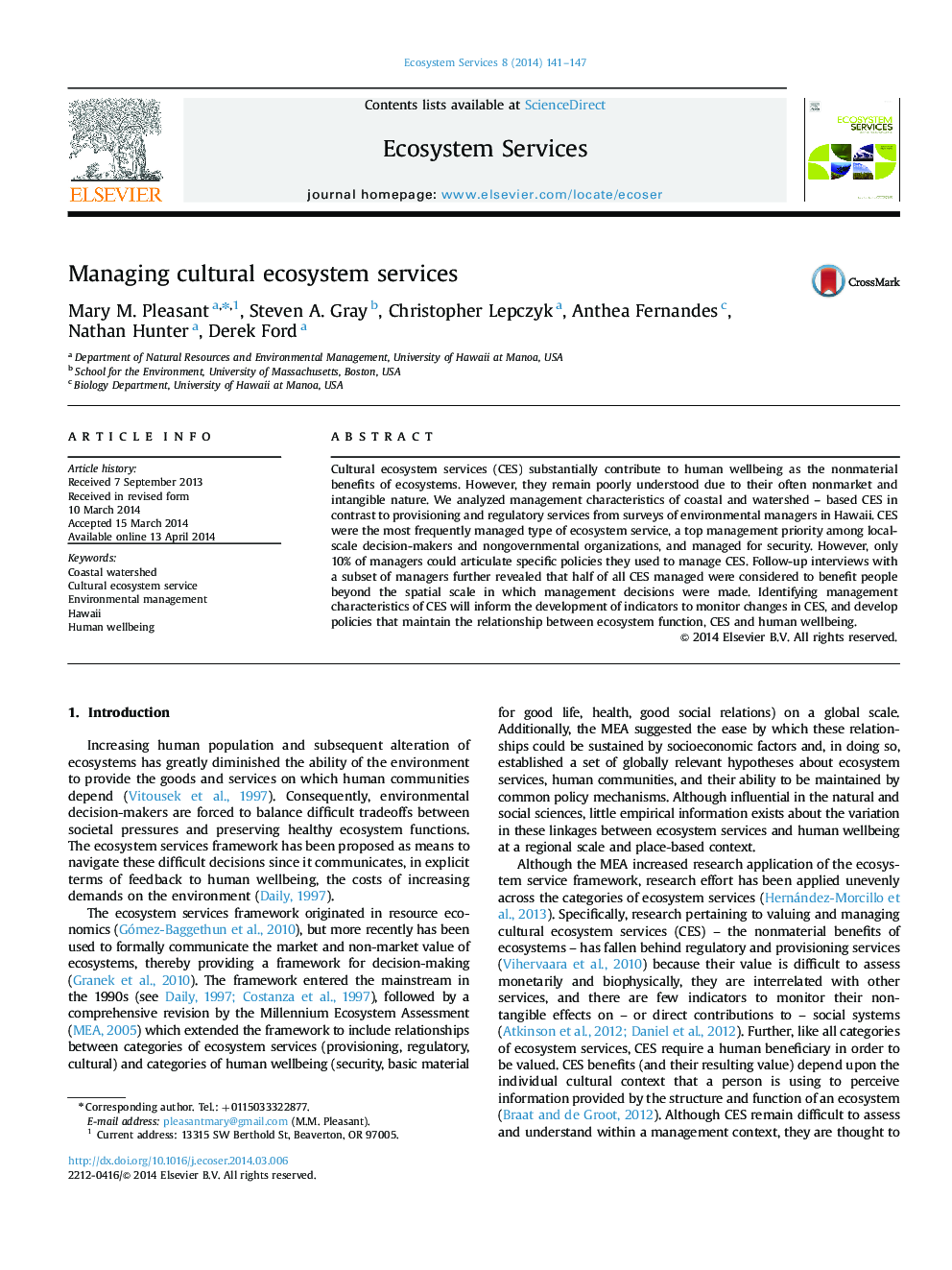| کد مقاله | کد نشریه | سال انتشار | مقاله انگلیسی | نسخه تمام متن |
|---|---|---|---|---|
| 108108 | 161853 | 2014 | 7 صفحه PDF | دانلود رایگان |
• CES are difficult to value and manage because of their often intangible nature.
• CES were high management priorities for local-scale managers and NGOs.
• CES were perceived to benefit humans locally and exported at larger scales.
• Developing indicators to track CES changes could better inform management policies.
Cultural ecosystem services (CES) substantially contribute to human wellbeing as the nonmaterial benefits of ecosystems. However, they remain poorly understood due to their often nonmarket and intangible nature. We analyzed management characteristics of coastal and watershed – based CES in contrast to provisioning and regulatory services from surveys of environmental managers in Hawaii. CES were the most frequently managed type of ecosystem service, a top management priority among local-scale decision-makers and nongovernmental organizations, and managed for security. However, only 10% of managers could articulate specific policies they used to manage CES. Follow-up interviews with a subset of managers further revealed that half of all CES managed were considered to benefit people beyond the spatial scale in which management decisions were made. Identifying management characteristics of CES will inform the development of indicators to monitor changes in CES, and develop policies that maintain the relationship between ecosystem function, CES and human wellbeing.
Journal: Ecosystem Services - Volume 8, June 2014, Pages 141–147
